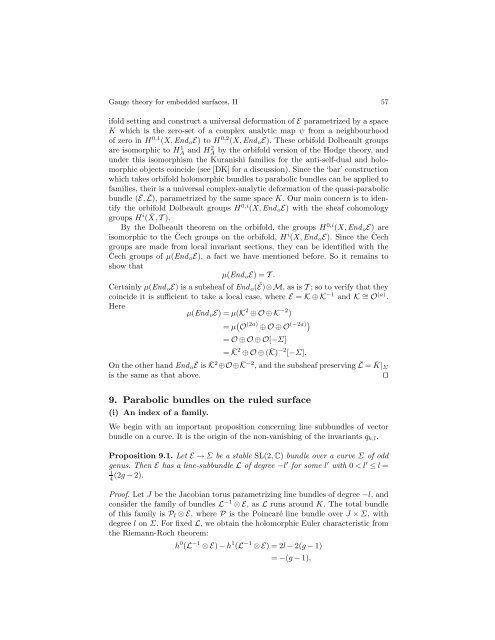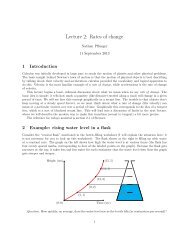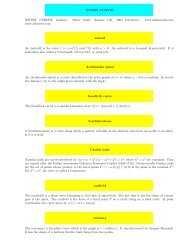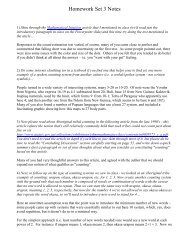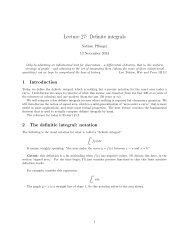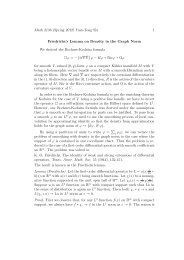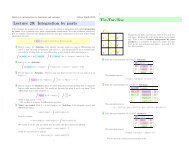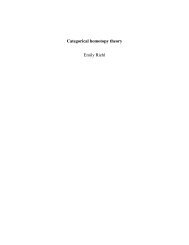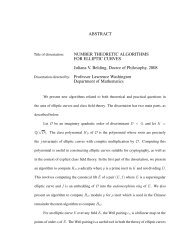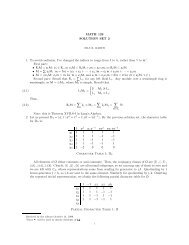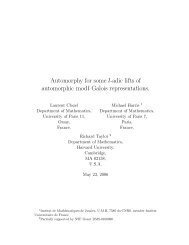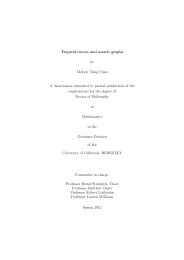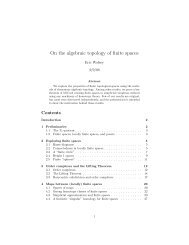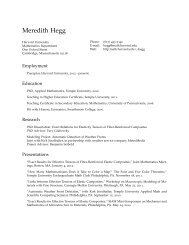Gauge theory for embedded surfaces, II
Gauge theory for embedded surfaces, II
Gauge theory for embedded surfaces, II
Create successful ePaper yourself
Turn your PDF publications into a flip-book with our unique Google optimized e-Paper software.
<strong>Gauge</strong> <strong>theory</strong> <strong>for</strong> <strong>embedded</strong> <strong>surfaces</strong>, <strong>II</strong> 57<br />
ifold setting and construct a universal de<strong>for</strong>mation of E parametrized by a space<br />
K which is the zero-set of a complex analytic map ψ from a neighbourhood<br />
of zero in H0,1 (X,End oE) toH0,2 (X,End oE). These orbifold Dolbeault groups<br />
are isomorphic to H 1 A and H2 A<br />
by the orbifold version of the Hodge <strong>theory</strong>, and<br />
under this isomorphism the Kuranishi families <strong>for</strong> the anti-self-dual and holomorphic<br />
objects coincide (see [DK] <strong>for</strong> a discussion). Since the ‘bar’ construction<br />
which takes orbifold holomorphic bundles to parabolic bundles can be applied to<br />
families, their is a universal complex-analytic de<strong>for</strong>mation of the quasi-parabolic<br />
bundle ( Ē, ¯ L), parametrized by the same space K. Our main concern is to identify<br />
the orbifold Dolbeault groups H 0,i (X,End oE) with the sheaf cohomology<br />
groups H i ( ¯ X,T ).<br />
By the Dolbeault theorem on the orbifold, the groups H 0,i (X,End oE) are<br />
isomorphic to the Čech groups on the orbifold, Hi (X,End oE). Since the Čech<br />
groups are made from local invariant sections, they can be identified with the<br />
Čech groups of µ(End oE), a fact we have mentioned be<strong>for</strong>e. So it remains to<br />
show that<br />
µ(End oE)=T.<br />
Certainly µ(End oE) is a subsheaf of End o( Ē)⊗M,asisT; so to verify that they<br />
coincide it is sufficient to take a local case, where E = K⊕K−1and K ∼ = O (a) .<br />
Here<br />
µ(End oE)=µ(K 2 ⊕O⊕K −2 )<br />
=µ O (2a) ⊕O⊕O (−2a)<br />
=O⊕O⊕O[−Σ]<br />
= ¯ K 2 ⊕O⊕( ¯ K) −2 [−Σ].<br />
On the other hand End o Ē is ¯ K 2 ⊕O⊕ ¯ K −2 , and the subsheaf preserving ¯ L = ¯ K|Σ<br />
is the same as that above. ⊓⊔<br />
9. Parabolic bundles on the ruled surface<br />
(i) An index of a family.<br />
We begin with an important proposition concerning line subbundles of vector<br />
bundle on a curve. It is the origin of the non-vanishing of the invariants qk,l.<br />
Proposition 9.1. Let E→Σbe a stable SL(2, C) bundle over a curve Σ of odd<br />
genus. Then E has a line-subbundle L of degree −l ′ <strong>for</strong> some l ′ with 0


